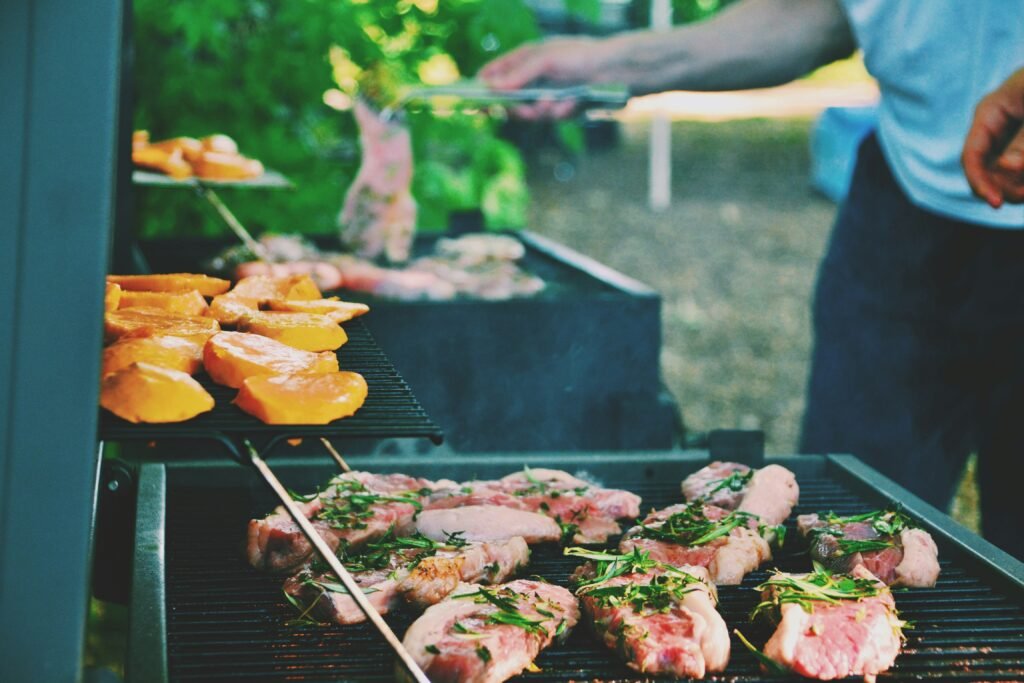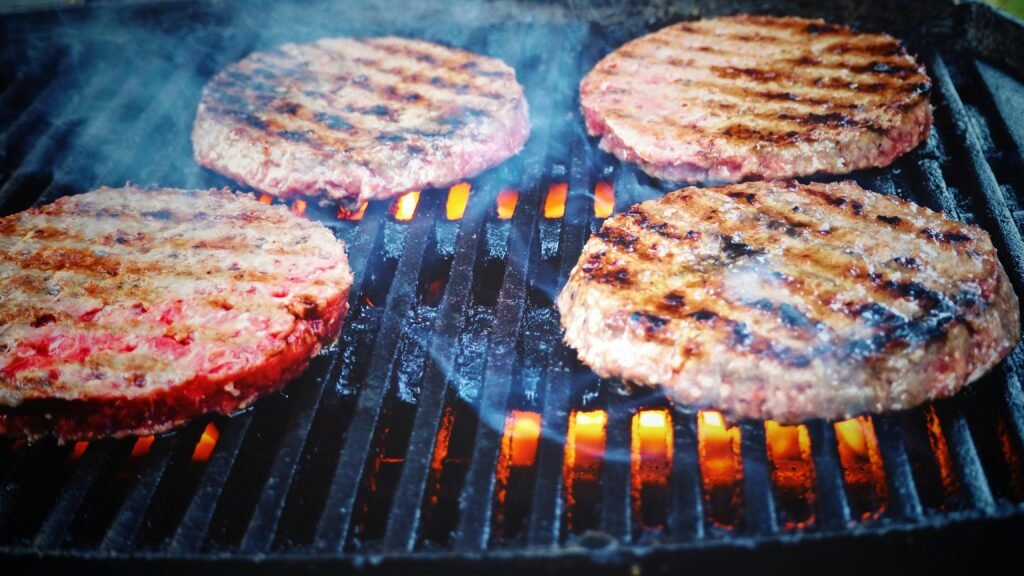Have you ever found yourself wondering how to elevate your culinary game with something smoky, savory, and truly remarkable? We pondered the very same thing and found ourselves on a rewarding journey to master the art of smoked fish. Exploring this world is like entering a new dimension of flavor and tradition, blending time-honored techniques with our personal twist. Today, let’s share this journey together, breaking down the steps, tips, and everything you need to know to create a smoked fish dish that will wow your taste buds and maybe even make you the star of your next gathering.
Why Smoke Fish?
You might ask, why should we even bother with smoking fish when there’s sushi, ceviche, or even a good ol’ grilled filet at our disposal? The answer lies in the unmatched depth of flavor and texture smoking can bring to a simple piece of fish. The process not only preserves the fish but imparts a richness that balances beautifully with its natural flavors. As we found, the complexity of smoked fish comes from its ability to engage all your senses, offering a smoky aroma, a savory taste, and a firm yet flaky texture. Smoking fish is like creating a tiny masterpiece with every fillet.
The Best Fish for Smoking
Before we get started, it’s essential to understand what types of fish work well for smoking. Not every fish holds up to the smoking process, so here’s a quick rundown of our top picks and why we love them:
Salmon
Salmon is a classic choice and perhaps the most familiar smoked fish for many. Its high-fat content makes it especially absorbent to smoke, resulting in a wonderfully moist and rich outcome.
Trout
If we can access freshwater trout, smoking it can yield a subtlety that salmon sometimes overshadows due to its oiliness. Trout offers a delicate flavor that pairs well with a lighter smoke.
Mackerel
Known for its oily flesh, mackerel takes on smoke beautifully without falling apart. It’s a go-to option for anyone looking to try a more robust fish, often resulting in a bold and savory dish.
Whitefish
Whitefish provides a balanced option that’s less oily than salmon or mackerel but still rich enough to absorb flavors effectively. It offers a milder, sweeter taste that’s perfect for beginners in the world of smoked fish.

This image is property of images.unsplash.com.
Preparing the Fish
Before getting into the act of smoking, we must carefully prepare our prize: the fish. Preparation is a critical step that sets the foundation for how well our fish will absorb the smoke and ultimately taste. It’s much like prepping a canvas before painting a masterpiece.
Cleaning and Filleting
Start by cleaning our fish thoroughly, removing any scales or remnants that could interfere with flavor absorption. Once cleaned, filleting is the next step. Properly filleted fish takes on smoke better and more evenly. If we’re handling this step ourselves, a sharp filleting knife becomes essential, allowing for precise cuts.
Brining Basics
To take our fish from good to extraordinary, we need to brine. This isn’t just soaking it in salty water—it’s a scientific marvel that enhances flavor and texture—a mini chemistry class in our kitchen.
Simple Brine Recipe
| Ingredient | Quantity |
|---|---|
| Water | 4 cups |
| Salt | 1 cup |
| Brown Sugar | 1 cup |
| Lemon Slices | 2-3 |
| Bay Leaves | 2 |
We mix these ingredients until the salt and sugar dissolve, then submerge our fish fillets, allowing them to rest in this mixture for about 4 to 6 hours. It’s like giving our fish a spa day before the main event.
Drying the Fish
After brining, we must raise the fish out of its luxurious bath and pat it dry. Letting it air dry a bit longer forms a thin, sticky layer on the surface called a pellicle. This is essential for smoke adherence—think of it as priming the canvas before painting.
Choosing Smoking Methods
Now comes the part where patience is rewarded: the smoking process. Whether we choose to approach it with an artisanal slant or lean heavily on technology, we’ll break down two primary methods: cold smoking and hot smoking.
Cold Smoking
Cold smoking requires keeping the temperature low—under 90°F (32°C). Ideal for those with dedication and time, it infuses flavor over a more extended period. Given the low temperature, it’s crucial that our fish is cured correctly to prevent harmful bacteria. Cold smoking yields a smoother, silkier texture often likened more to a gourmet delicacy.
Hot Smoking
As its name suggests, hot smoking raises the stakes and temperature, typically between 160°F and 225°F (71°C to 107°C). Many find this method preferable for speed and safety, as it both cooks the fish and infuses it with an aromatic smokiness. Hot smoking offers a firm, flakier texture that’s as versatile in sandwiches as on crackers at a canapé party.

This image is property of images.unsplash.com.
The Best Wood for Smoking Fish
Selecting the right wood is akin to choosing the right spices—it can make or break the dish. Let’s highlight what woods complement and enhance the natural flavor of our fish:
Alder Wood
Alder wood marries well with most fish, providing a sweet and light smoke that doesn’t overpower the delicate flavors present in whitefish or trout.
Maple Wood
For those of us leaning towards a sweeter note, maple wood is an excellent choice. It pairs well with salmon, imbuing it with a rich, subtly sweet flavor.
Cherry Wood
Cherry wood provides a uniquely mild smoky sweetness, lending a beautiful mahogany hue to our fish. Best used in combination with other woods, it adds complexity and warmth.
Hickory Wood
For those feeling adventurous, hickory offers a robust and intense smokiness. It works best with stronger-flavored fish like mackerel, creating a bold and savory experience.
Step-by-Step Smoking Process
Setting Up for Success
First, we must ensure our smoker’s temperature is steady. If we’re beginners, a reliable and user-friendly smoker helps while we gain our sea legs. Arranging our wood chips in pre-soaked fashion ensures they gently smolder rather than burn.
Smoking Time
We lay our fillets on the racks, allowing ample space between each to ensure even distribution of smoke and heat. Depending on our chosen method, fish can take anywhere from one to several hours. Checking for doneness involves the oil rendering away, with fillets appearing firm yet tender to the touch.
The Presto Transformation
The great reveal moment arrives when we take our fish out from the smoker, marveling at its newfound richness and encapsulating aroma. This moment of unveiling is akin to watching a sunrise after a long night.

This image is property of images.unsplash.com.
Serving Suggestions
With our masterpiece now complete, let us move to the serving stage. Whether sophisticated or simple, smoked fish adds elegance to any spread.
Classic Pairings
Imagine smoked salmon atop a crisp bagel with a smear of cream cheese. For added zest, we recommend capers, red onion, and a squeeze of lemon. It’s comfort and luxury all in one bite.
Salad Inspirations
Layer smoky, delicate fish on a bed of arugula, with slivers of avocado, radishes, and a light lemon vinaigrette. The freshness balances the smoky depth, offering a light yet satisfying meal.
Smoked Fish Pâté
Flaking our creation into a bowl with crème fraiche, dill, and lemon juice transforms it into a dreamy pâté. Perfect for an appetizer with crackers or rye bread, it’s a dish that wows on every occasion.
Storing and Preserving Smoked Fish
After painstakingly creating such a concert masterpiece, preserving its essence becomes vital. Ensuring it remains fresh is straightforward with a few pointers:
Refrigeration
Once cooled, wrapping our fish tightly in plastic wrap or storing it in an airtight container will extend its life for about five to seven days in the refrigerator.
Freezing
If we have crafted more than we can consume immediately, freezing is our friend. Vacuum sealing before freezing prevents the dreaded freezer burn, keeping flavors intact for up to three months.
Troubleshooting Common Issues
Our path to perfect smoked fish might hit a few bumps. Don’t fret; we have solutions for common pitfalls.
Undercooked Fish
If we bite into our creation and discover it’s underdone, returning it to the smoker at a slightly higher temperature for a short time should remedy the issue without impacting flavor.
Too Salty Fish
On occasion, our brining zeal may lead to over-salting. Soaking the fish briefly in cold water post-smoking can reduce excess saltiness before serving.
Lackluster Smoke Flavor
If the smoke flavor doesn’t shine as bright as hoped, the solution might lie in longer smoking or tweaking our wood sources. A more robust wood blend can amplify the smoker’s magic.
Final Thoughts on Smoked Fish
Smoking fish isn’t just about another recipe; it’s about embracing a tradition that’s as much a part of culinary history as innovation. As we engage in this craft, let’s remember it’s less a task and more an expression of artistry. Each smoked fillet tells a story, a collaboration between nature, fire, and our hands. So, here’s to smoky adventures, shared bites, and finding joy in creating something unexpectedly profound from the simple treasures of the sea.



